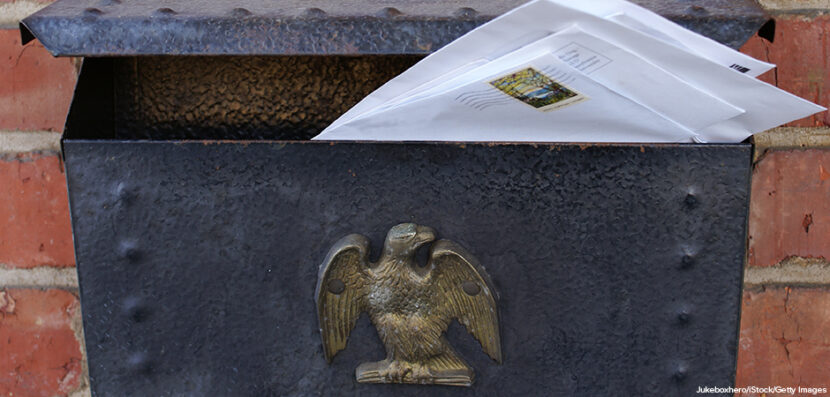- Current Events New Alabama Congressional District Selects Candidates
- Current Events Nebraska Rejects Winner-Take-All Proposal
- Citizenship Voting Under Age 18
- Citizenship Citizenship in Action
- Democratic Party Biden’s and Trump’s Recent Primary Results
- Elections Trump and Biden Win South Carolina and Michigan Primaries

New Challenges to Voting by Mail
Right now, the eyes of the nation are focused on the protests and rallies surrounding the death of George Floyd on Memorial Day. And when we aren’t thinking about that, there’s always the threat of coronavirus to worry about. So it’s not surprising if voting rights haven’t been on your radar lately. But that doesn’t mean they’re not important. In fact, a controversy is brewing at the moment that could have serious implications for the upcoming presidential election in November. Here, Election Central takes a closer look at the situation.
So What’s Happening?
The controversy surrounds the idea of voting by mail. This isn’t a new concept: the practice actually began back in the late 1800s to provide an option to people who were too sick or old to be able to make it to the polls in person on Election Day. Every state currently allows voting by mail, although the rules surrounding it vary widely from state to state. (For example, in some states, anyone can do it, while in others, you must provide a valid reason to your state’s election officer to be sent a mail-in ballot.) In 2018, nearly one-fourth of all votes were cast by mail.
So while the concept of mail-in ballots isn’t new, the sudden attention to it is. Because of the COVID-19 pandemic, many states have had to switch to mail-in ballots to prevent the possibility of infection in crowded polling places. Forty-six states have already widened the practice so that anyone who requests a mail-in ballot, for any reason, receives one. But four states have refused to, saying that fear of contracting coronavirus is not a valid reason to vote from home.
Who Can Submit Them?
Whether or not a person should be required to provide a reason to vote by mail is just one part of the controversy. Democratic and Republican lawmakers are also battling over who should be allowed to turn in completed ballots. Some Democrats favor letting one person turn in a ballot for another. For example, these Democrats argue, it is useful for one person to be able to turn in ballots for the residents of a nursing home. But opponents to voting-by-mail argue that allowing someone else to turn in a ballot, other than the person who filled it out, can result in voting fraud. They cite examples of “harvesters” who have collected large numbers of completed ballots and then tampered with the results before turning in the votes to the Board of Elections.
What Does the White House Say?
The Trump administration has recently spoken out on the question of the mail-in vote. Even though about 70 percent of Americans–including half of Republicans polled–support full access to mail-in voting, President Trump has said that he believes people should have to have a good reason in order to vote remotely. He has also tweeted out misleading information about mail-in voting policies in California and Michigan. (After the California statement, Twitter flagged Trump’s tweets for spreading false claims.)
Experts say that there is a slightly greater chance of voter fraud with absentee ballots versus voting in-person, but it’s still only a very tiny chance: about 0.00006 percent.
What About November?
So what does this all mean for the November elections? Democrats are pushing for legislation that would allow for nationwide absentee voting. But Republicans are opposed for several reasons. The effort would likely cost in the several billions of dollars, and not all Boards of Elections are up to the task of converting all of their processes to mail-in format only between now and November. It’s hard to be sure that enough paper ballots could even be printed and mailed in time. With fears about COVID-19 at the front of peoples’ minds, experts expect that up to 70 percent of the ballots in this November’s general election will be cast by mail.


